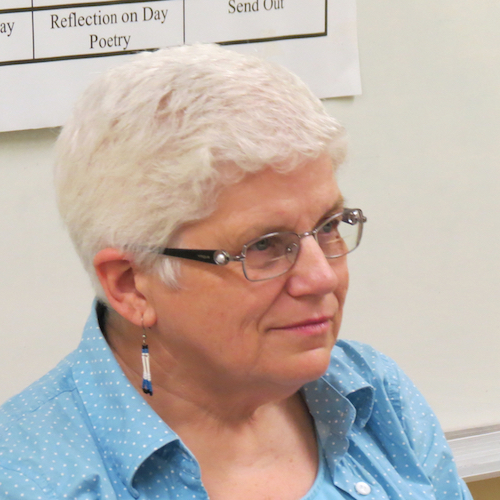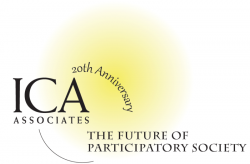The Power of Participatory Reflection on the Past using the Journey Wall / Historical Scan Method
This is a story that Wayne Nelson wrote, and that is included in the Historical Scan chapter of the book he started, “Getting to the Bottom of ToP: The Foundations of ICA Methods”. The “I” in this story is Wayne.
In 1978, I joined the staff of ICA’s community development project in Nigeria. As I arrived and settled in, it became apparent that the previous year had been a rough one for them. Difficulties beyond their control seemed to interrupt their work constantly. People told me stories about crises and troubles of nearly every nature possible to such an organization. A couple of key staff members had left the project and the mood was pretty low. It was apparent that there were many positive things happening in the community, but they seemed lost in the fog of the team’s negative story.
When the time to do project action planning for the next year rolled around on the calendar, I found myself with the assignment to guide our planning retreat. It was clear to me that the team needed to look back, see their situation more clearly and make some sense of their past year. They certainly needed to identify and acknowledge their challenges and difficulties; so they could move beyond them. They needed to rediscover the real success and progress they had made. They needed a new way to see their situation and tell their story that would release them to engage and be more effective.
I chose the Historical Scan to begin the planning process. It had been developed quite recently and I was keen to try this new application. I began by drawing a horizontal line on our blackboard. I divided the line into 12 segments; one for each month of the past year. I then divided the group into six working groups of 2- 3 people and asked each group to brainstorm 5 – 10 events that were significant for the group. After working in small groups, we wrote each event on the timeline under the appropriate date.
What a full year it was. We filled the board with events. The brainstorm included over 50 events the group felt were significant. The number itself was a bit of a surprise to everyone, because they felt not much had really happened.
As we looked at the events, we identified those that were accomplishments. We noted those that were clearly setbacks. As we talked about the year, many stories were told. Events that had slipped from memory were remembered. The atmosphere in the room began to shift; changing from hesitance to fascination and people became more engaged.
I asked the group to describe its mood over the course of the year. It seemed to have begun on a positive note with a lot of possibilities. I placed the chalk on the board about two thirds of the way up and asked the group to help me complete the line throughout the whole year. The “mood line” started fairly high and quickly dropped over the next couple of months following a negative experience with a government agency. The line slowly rose as the focus was placed on work on a couple of quite successful projects. It dropped again during an especially ambiguous chaotic time and began to rise quite rapidly as the community street lighting project illuminated the night. We sifted through the timeline and marked several events as significant. The group found that the majority of the events they named as significant were more positive than negative.
We looked again at the events on the timeline; this time looking at the events that seemed to indicate shifts in our work, our results and the overall mood. We found three major shifts. After looking at each of the four time periods, we gave a title to each of them to describe the experience. This being a rough year, I was prepared to hear titles filled with doom and despair. The group had become so entangled in the frustrating challenges that it was difficult to see their whole situation and its significance.
I was indeed surprised. The first period was titled, “Looking Down the Road to Victory.” The second was, “The Rock in the Middle of the Road.” The third period was, “Crushed but Climbing.” The final time period, the last six weeks, was titled, “Beginning to Move.” The titles reflected the events identified as well as the flow of mood and spirit in the group.
As we looked at the whole timeline, I asked the group to give the whole year a title. It was clear that the question was now looking beyond the timeline itself. They were looking at their actual lived experience of the past year.
It was not an easy conversation, but the group was able to see that they had actually made significant progress in their work with the community itself. The realization came somewhat slowly until we began to give it a name. Someone called out, “The Rock will Split”. It is a line from a D. H. Lawrence poem about moving into, through and beyond a personal, existential crisis. When the group heard those words, their whole image of the past year shifted from one of defeat to perseverance in the face of real, difficult, traumatic and challenging times. The mood in the group went through the ceiling.
The rock did indeed split. Not only did it become the title for a time period, but it became a kind of rallying cry. They knew, deep inside themselves, that they would not accept defeat, but they needed to look deeply into their situation and their attitude toward it to discover their deeper, more powerful story of what was happening. It truly transformed the whole group’s relationship to their work and their future.






